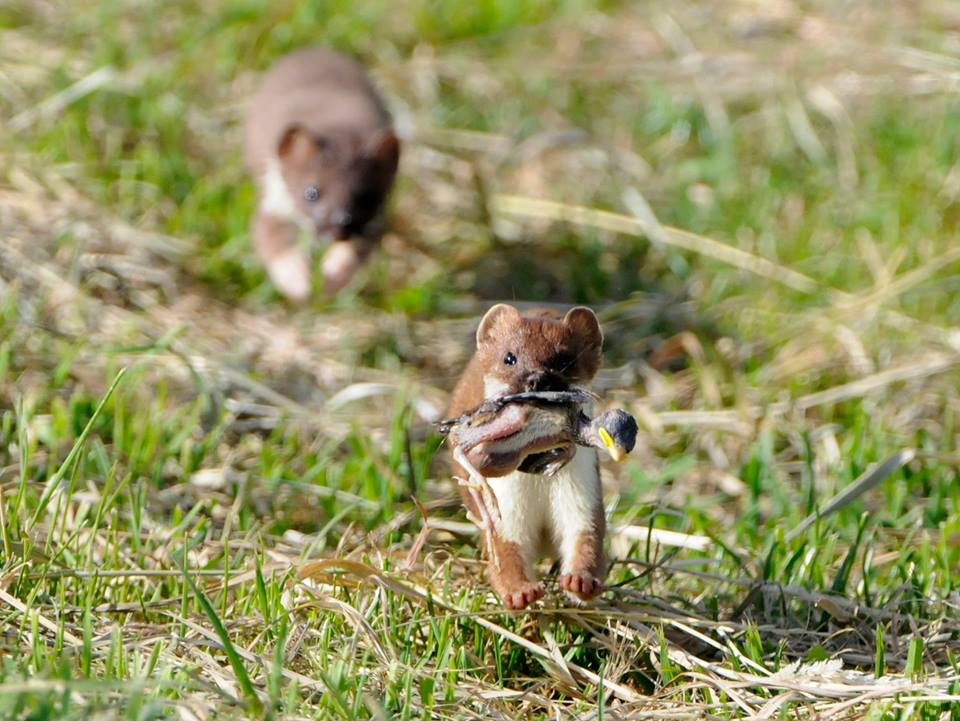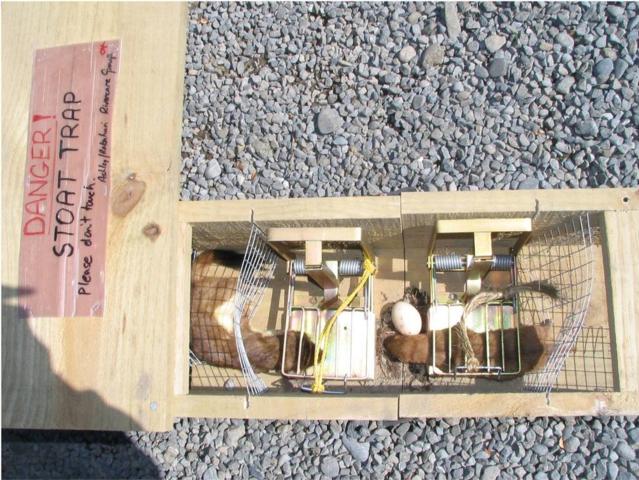Stoat
- Agile and excellent climbers, stoats hunt at any time, day or night
- Rapid reproduction rates
- Will happily swim up to 1.5 km to reach islands, so braided rivers birds nesting on temporary gravel islands are just as vulnerable as those nesting near riverbanks
- Inhabits all regions, from alpine to coastal
- Known predators of native birds, reptiles and invertebrates
- As they are unable to store fat, the need to hunt and eat constantly during all seasons
Description
Reddish-brown fur on its back, a white or cream coloured underbelly, and has a long tail relative to weasels, with a distinctive and obvious bushy black tip. An adult male can measure 390 mm from nose to tip of the tail. Stoats can be confused with weasels but adult stoats are longer and heavier than adult weasels and display a straight line along their sides where the brown fur meets the pale belly fur.
Conservation activities
- Trapping. The DOC 150 and 200 are effective for stoats and rats. (Depending on the settings, bait, and location, they will also catch hedgehogs, weasels and (small) ferrets).
- Where you can buy or order DOC 200 traps ($75-$90 each)
- If you are interested in helping out with or starting up a local trapping programme, please contact your nearest DOC office or contact one of the local rivercare groups.
More information
- DOC: Stoats
- Pest Detective: Stoat
- 2016: Latham; Chicken and quail smells as chemical camouflage (BRaid seminar)
- See Predators/research and references
- See Ecology/research and references


